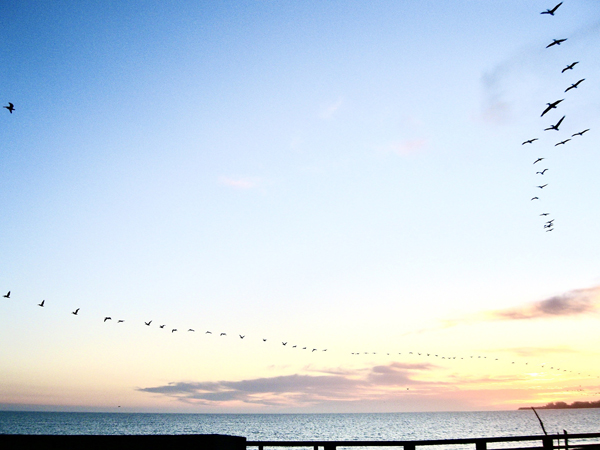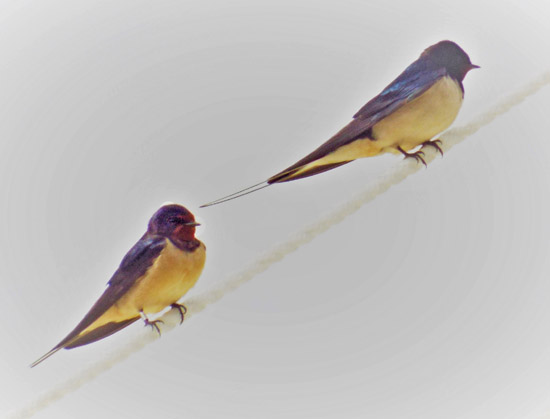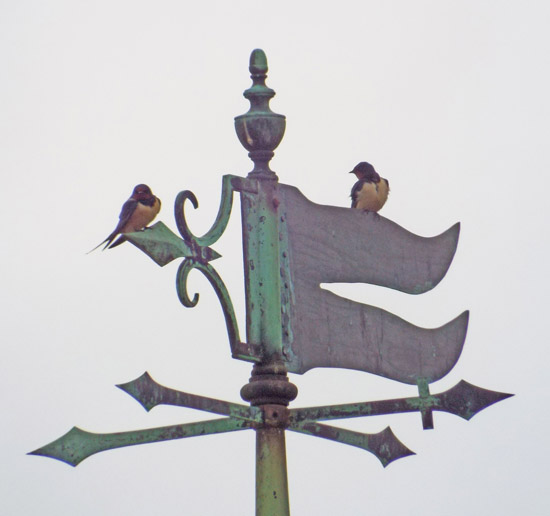Bob Ward
Plants on the Move
Plants are good at occupying new ground. Like couch grass they can spread long roots below the surface before poking up to start fresh leaves. Or as thistledown they float off on a breeze to settle at a distance. Other plants produce burrs that cling to the coats of passing animals, hitching a ride. Gorse flowers give way to seedpods that in sunshine will burst, scattering the contents across the area.
However, since the ages of European maritime exploration, humans have criss-crossed the world, taking plants with them. The modern garden is truly multicultural. I know a couple, devoted botanists, who went to Romania for a holiday walking through upland flower meadows. At the end of each day, they found their socks covered with seeds. They carefully picked these off, took them home and planted them in a wooden tub. Now they are pleased to display what they call their ‘Romanian sock garden’.
All along the east coast of England, in early spring, a plant that dominates the roadside verges is an umbellifer called alexanders, or sometimes ‘the parsley of Alexandria’. It is said to have been introduced by the Romans during their occupation, because they liked it as a salad. Further inland it becomes relatively scarce, though in the Middle Ages monks would cultivate it in their herb gardens. By mid-summer the alexanders lose their leaves, leaving dry brown stems crowned by an array of black seeds with the appearance of tiny sculptures made from coal.
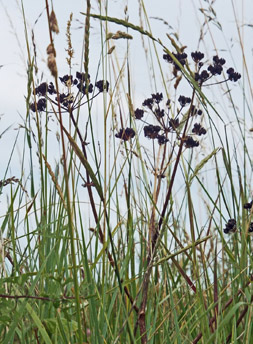
Bob Ward, ‘Alexanders’ in a Field, photograph, 2024
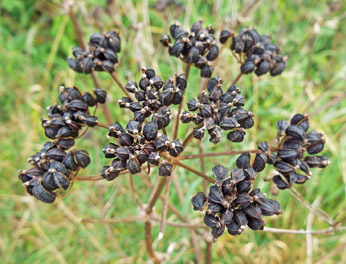
Bob Ward, Closeup, ‘Alexaders’ in Seed, photograph, 2024
Trees also have been transported across frontiers. Sycamores, for example, were brought into Britain through the 18th C., an era when wealthy people took to landscaping their estates. Since then, the majestic tree has become widespread. In Wales there is a custom whereby a young man prepares to go courting by carving a wooden ‘love-spoon’ to present to his lady. The light-coloured workable sycamore wood is often chosen for this purpose.
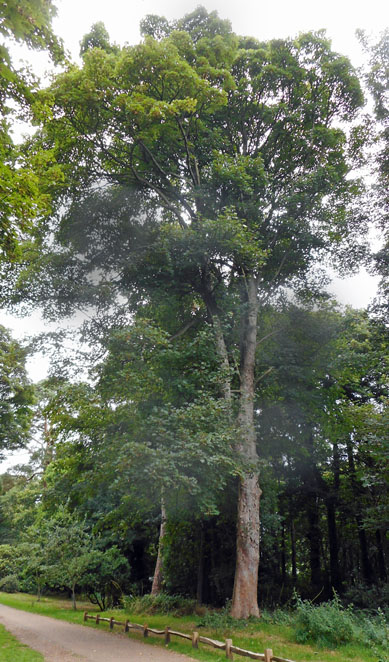
Bob Ward, Pathway Sycamore, photograph, 2024
A notable sycamore tree still stands in the Dorset village of Tolpuddle. Beneath its branches in 1834, six, hard-pressed farm labourers formed a union in protest against their working conditions. Officialdom, fearing widespread unrest, over-reacted by sentencing the men to transportation for seven years to a penal colony in Australia. They became known as the ‘Tolpuddle Martyrs’. Fortunately, there was a public outcry and after two years the men were pardoned and granted a passage home.
Only this year another sycamore was the centre of a news story. At the time of the Roman occupation of Britain, the emperor Hadrian caused a great defensive wall to be built that stretched across the north of England to keep out the marauding Scots. It remains as an archaeological wonder. Running along mountain ridges at one point it dips as it crosses a bare-sided valley. It so happened that a sycamore grew in the dip, resulting in a striking skyline that was widely appreciated and much photographed. Nevertheless, for obscure reasons two men chose to fell the tree without consulting the National Trust owners of the site. Again, the public reacted with horror. There are plans to grow another tree to replace it, if possible. The offenders await trial. AQ

